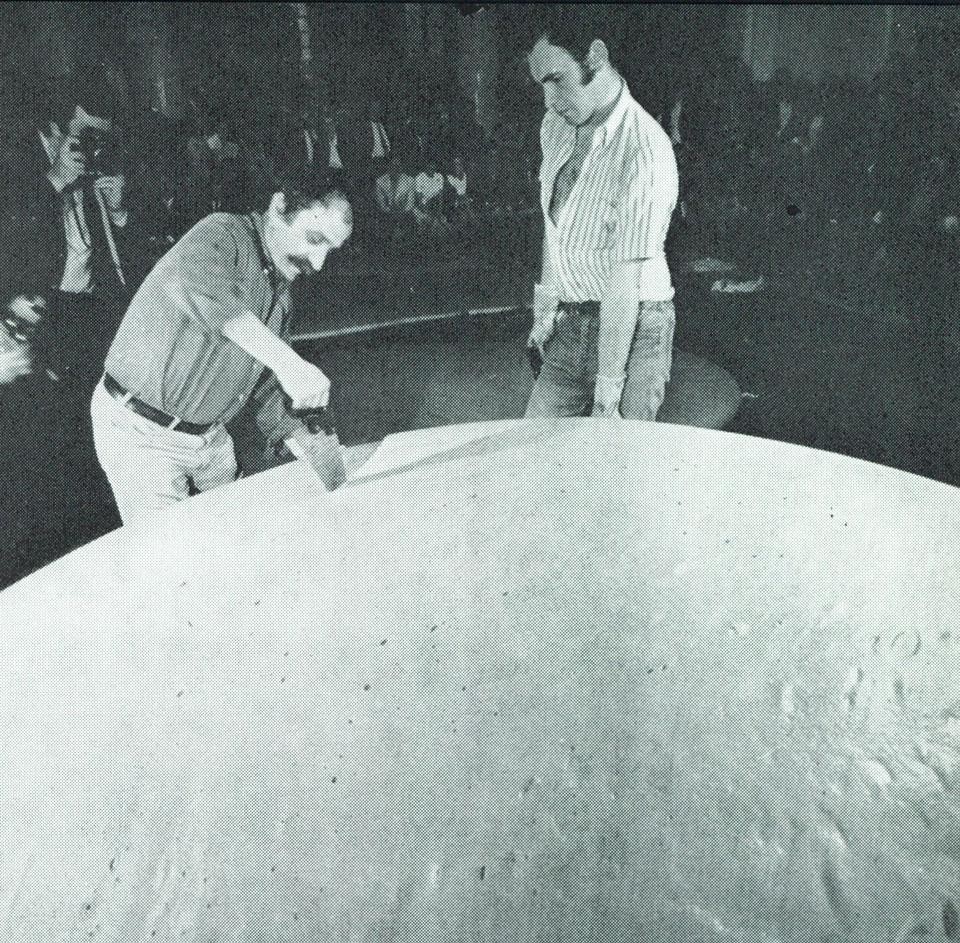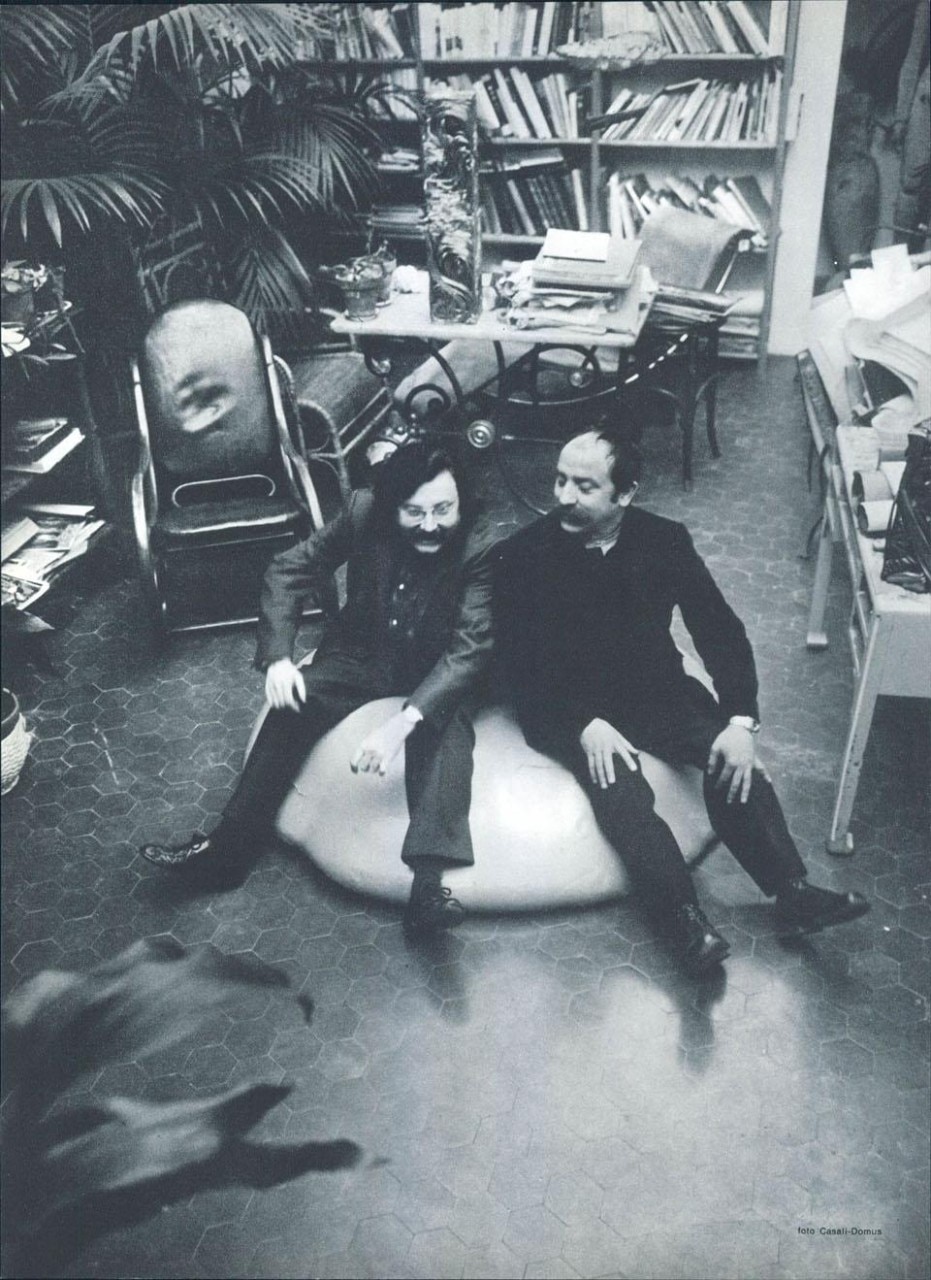At 6 pm on 24 April '68, the Galleria Nazionale d'Arte Moderna in Rome was the theatre of a remarkable happening, during which the artist César presented three of his expansions: three castings of liquid polyurethane, poured thirty litres at a time, in blue, yellow and red, watched by enthralled spectators as the material expanded upon contact with the air and instantly hardened into enormous forms stretching across the floor.
1960 was a seminal year in the work of the greatest contemporary French sculptor: the year of César's famous compressions. It also witnessed the artist's attachment to Nouveau Réalisme, following the scandal caused at the Salon de Mai by the presence of cars compressed into three one-ton 'bales' exhibited as sculptures. Walking through a scrap metal yard one day, César had received the revelation of this superior stage of metal. He had been so struck by the beauty of those 'bales', compressed and gauged on leaving the hydraulic press, that he adopted them as his own sculptures. Compression was identified with the terminal stage of an appropriation, with an increasingly direct possession of material gained by the artist.


In 1968 César established himself as the modern demigod of polyurethane, the inspired pioneer of industrial chemistry.
2.jpg.foto.rmedium.jpg)
In 1968 César established himself as the modern demigod of polyurethane, the inspired pioneer of industrial chemistry. His dazzling demonstration was bathed in the endlessly renewed joy of discovery. Which is how the great have always worked.
Pierre Restany
1.jpg.foto.rmedium.jpg)
1.jpg.foto.rmedium.jpg)

